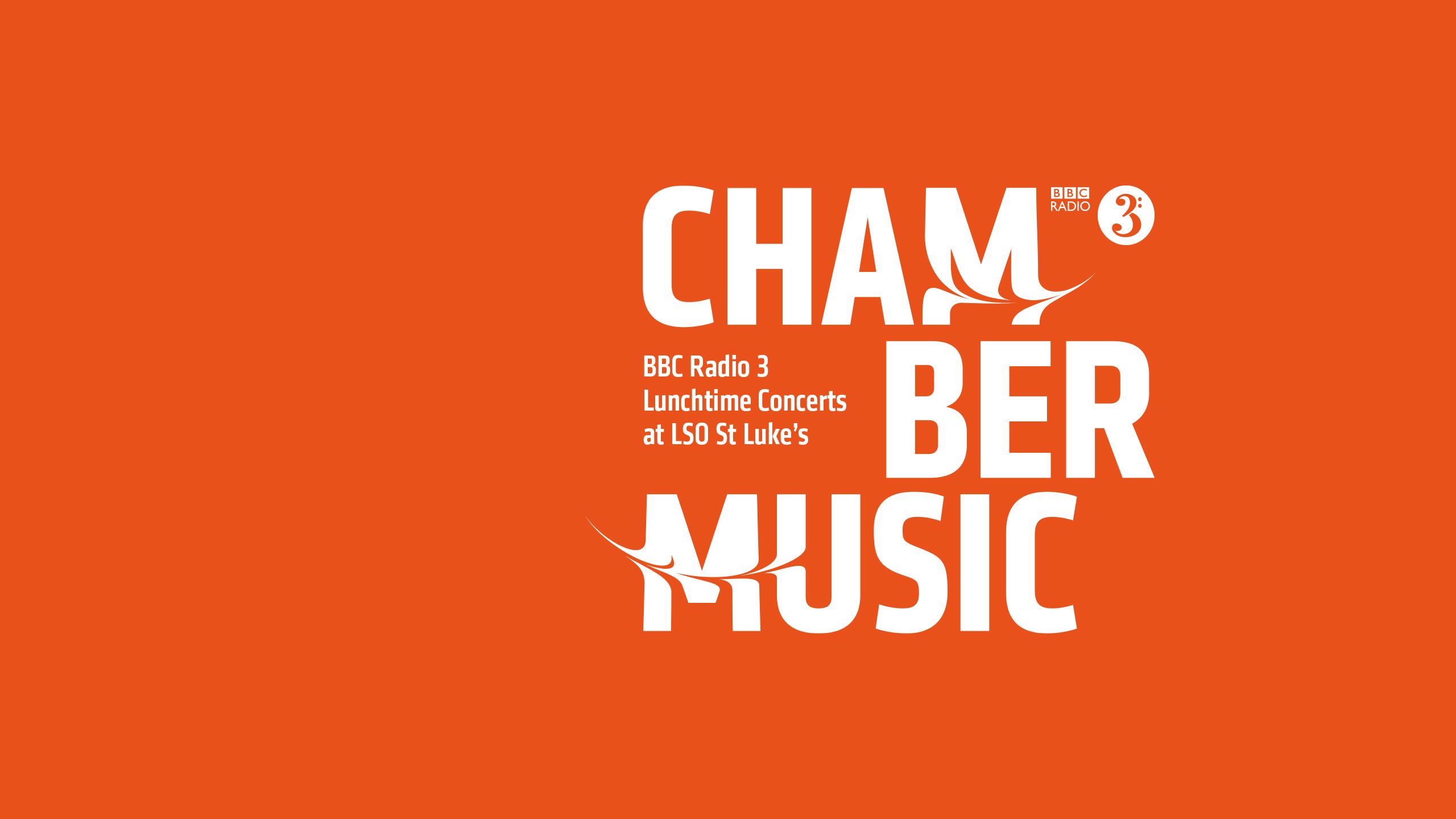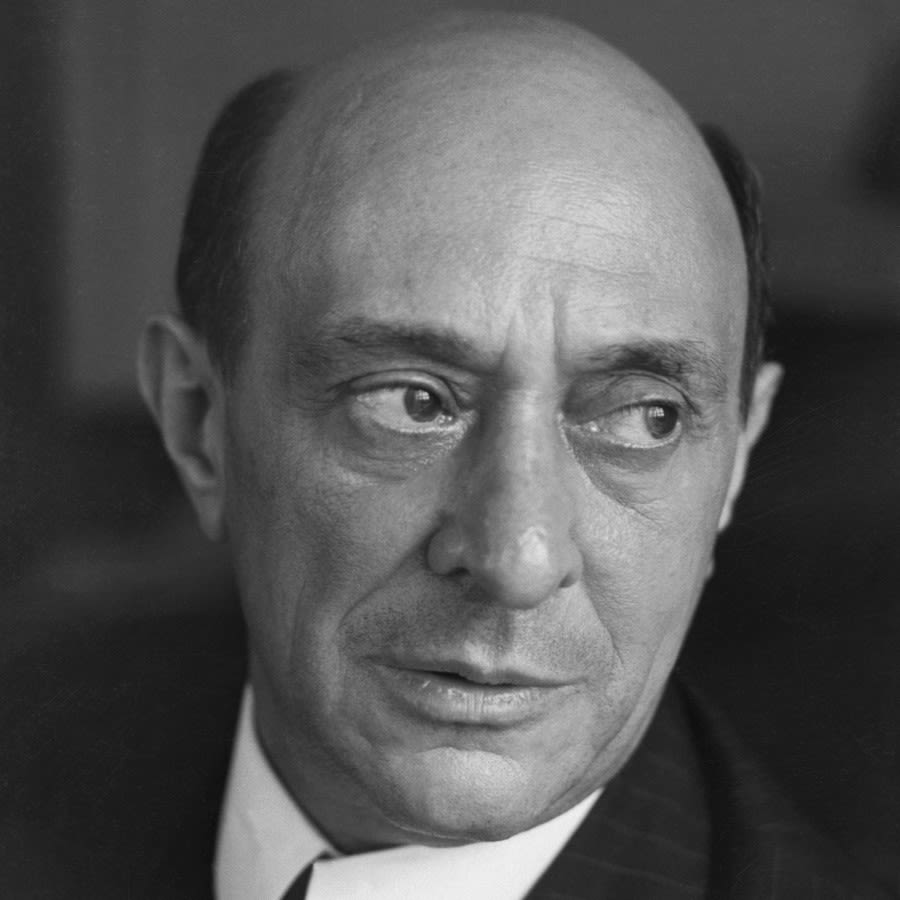
Friday 2 October 1pm
BBC Radio 3 Lunchtime Concert
Peter Donohoe: Brahms and Beyond
Brahms Intermezzi Nos 2 & 3, Op 117
Schoenberg Klavierstücke Nos 1 and 2 from Fünf Klavierstücke Op 23
Berg Piano Sonata Op 1
Webern Variations for piano
Brahms Piano Sonata No 1
Peter Donohoe piano
Visit our website for information on how we are ensuring activity at our venue LSO St Luke’s is COVID-19 secure.
Recorded for future broadcast by BBC Radio 3.
The support of our audience has truly never been more important for LSO St Luke's and the LSO's world-class artistic programme. By supporting us now and in the months to come, you will help us to continue to adapt our music-making and activities to meet the challenges of these times, including sharing the gift of music with our local communities through our LSO Discovery programme.
About 'Brahms and Beyond'
Traditionalist or innovator? Classicist or Romantic? Brahms stood with one foot in the past and one in the future, a figure whose music would influence generations of composers, and echo in the work that would follow.
In this series, we explore Brahms’ most extraordinary works for chamber ensemble, compositions by his friends and contemporaries, and music by Mahler, Berg and other later composers which bear the trace of his influence.
Ahead of the concert, we spoke to Peter Donohoe about performing live again and the music in today's programme.
' I wonder if this is what it feels like every time you have a sabbatical and return to work. If you do three concerts a week, as I normally would, there are lots of things about it that you take for granted – it’s just part of your life and you get used to it. But it’s the most incredible experience to be a musician. Some musicians forget that, and maybe I did to some degree. This is a very good way of being reminded.
Brahms is one of the most gloriously romantic and lyrical composers who lived – so many people's favourite composer and certainly one of mine. The most influence he had was on the Germanic strand of writing, the most famous part of which, for pianists, is the Second Viennese School: Schoenberg, Berg and Webern.
I think in many people’s minds, it’s a completely different world. But I love the way that you can see a line from one to the other. I’ve always thought these lines from one period or composer to another are fascinating. In the end, it means that the whole history of music is part of one great big statement. To be able to pick this out and demonstrate it in one concert is really exciting for me.'
Brahms
Intermezzo No 2 in B-flat minor, Op 117
Intermezzo No 3 in C-sharp minor, Op 117
1892

In the last years of his life, Brahms wrote a series of miscellaneous pieces for piano. In every respect, these pieces are far from the pugnacious piano works of Brahms’ youth. These are more reflective and introspective.
Brahms’s Opus 117 was written in 1892. It consists of three short pieces styled as ‘intermezzos’ – pauses for reflection, transitional moments between heavier emotions.
No 2’s main musical idea is a chain of notes in linked pairs in the right hand, placed over flowing figurations in the left hand that ripple through various keys. The mood rises from the sorrowful to the almost defiant, and back.
The third Intermezzo, in C-sharp minor, provides relief from the desolation of the Second, with a lyrical and expansive mood.
Note by Andrew Mellor
Johannes Brahms
1833–97

Showing early musical promise, the young Johannes Brahms supplemented his parents’ meagre income by playing in the bars and brothels of Hamburg’s infamous red-light district. In 1853 he presented himself to Robert Schumann in Düsseldorf, winning unqualified approval from the older composer. Brahms fell in love with Schumann’s wife, Clara, supporting her after her husband’s illness and death. The relationship did not develop as Brahms wished, and he returned to Hamburg; their close friendship, however, survived.
In 1862 Brahms moved to Vienna where he found fame as a conductor, pianist and composer. The Leipzig premiere of his German Requiem in 1869 proved a triumph, with subsequent performances establishing Brahms as one of the emerging German nation’s foremost composers.
Profile by Andrew Stewart
Schoenberg
Klavierstücke Nos 1 and 2 from Fünf Klavierstücke Op 23
1920–23

Schoenberg wrote his Fünf Klaviertstücke (Five Piano Pieces) between July 1920 and March 1923. It was a time of transition for the composer, who was starting to experiment with a new method of writing.
The ‘twelve tone’ method freed music from allegiance to a particular key by treating all twelve notes of the scale equally. It was first glimpsed in this work – though only in the final waltz (not played today).
Schoenberg believed piano music should contain ‘as few notes as possible’. In these short pieces, each hand etches careful, rhythmically complex lines against the other.
Despite its clarity, Schoenberg was determined his music would sound both free and moody. There is a sense of tuneful melancholy in the first movement ‘very slow’, and of mania in the second, ‘very fast.’
Note by Andrew Mellor
Arnold Schoenberg
1874–1951

© Bettmann / Getty
© Bettmann / Getty
One of the most influential 20th-century composers, Schoenberg has justly been described as the ‘reluctant revolutionary’, pioneer of a method of composition that broke with long-standing traditions of harmony and melodic writing.
His structured use of the twelve notes of the scale was misunderstood and condemned by many. Those who regarded the twelve-note method as emotionally sterile were forced to reconsider when Schoenberg completed his highly dramatic opera Moses und Aron in 1928. Shortly after Hitler came to power in 1933, the Schoenbergs emigrated from Germany and eventually settled in the US. Here, he taught and composed a series of refined twelve-note masterpieces.
Berg
Piano Sonata Op 1
1908

Berg was one of Schoenberg’s most receptive pupils. He wrote his Piano Sonata in 1908, effectively a graduation piece to prove what he had learned.
He had learned a few things: how to spin-out a long musical conversation from variations on a single motif – and how to write in clear structural shapes.
Berg had also learned to be himself. He was a musician who loved long, shapely melodies, and who felt the need to respond to the crisis of Romanticism after Wagner.
Berg’s Piano Sonata does all those things. It is restlessly tuneful and bursting with feeling.
Note by Andrew Mellor
Alban Berg
1885–1935

Although piano lessons formed part of Berg’s general education, the boy showed few signs of exceptional talent for music. He struggled to pass his final exams at the Vienna Gymnasium, preferring to learn directly of new trends in art, literature, music and architecture from friends such as Oskar Kokoschka, Gustav Klimt and Adolf Loos.
On graduating from school, Berg accepted a post as a local government official, but in October 1904 was inspired by a newspaper advertisement to study composition with Arnold Schoenberg. He studied for six years with Schoenberg, who remained his close friend and mentor.
In 1910 Berg completed his String Quartet, in which he revealed an independent creative flair. As an innovative composer, Berg successfully married atonality – and, later, a harmonic and melodic language based on the use of all twelve tones of the chromatic scale – with forms from the past. Traces of popular music also surface in his works.
Profile by Andrew Stewart
Webern
Variations for piano
1935

Webern studied with Schoenberg alongside Berg. He wrote his Variations for Piano in the year from October 1935.
Only the last movement of the three is a standard set of variations based on an explicit theme. Webern intended the title more as a reflection of Schoenberg’s idea of ‘total variation’ already demonstrated by Berg: that the music would spin out from a single idea.
Webern’s music is always precise and intricate. This piece is also condensed and fragmentary – paying allegiance to Schoenberg’s ‘as few notes as possible’ rule (it also obeys his twelve-note method).
There are puzzles and games in all the three movements. Webern compared the mirror games of the ‘moderate’ first movement’s noncommittal waltz to ‘an intermezzo by Brahms’.
The ‘very fast’ second movement is dominated by leaping themes imitating each other at staggered intervals (in ‘canon’). The essence of this hand-crossing music, said Webern, was its playfulness.
The ‘calm flowing’ variation movement starts proper with a statement of the simple theme and follows with variations, each eleven bars long.
For Webern, a good pianist would find intense expressiveness in this apparently terse music.
Note by Andrew Mellor
Anton Webern
1883–1945

Born in Vienna in 1883, Webern was introduced to music by his mother, a talented amateur pianist. From the autumn of 1904 until 1908, Webern took private composition lessons from Arnold Schoenberg. The two men became close allies, and their pupil-teacher relationship endured long after formal studies were concluded.
With limited experience and no training, Webern slowly established a career as a conductor. During the 1920s and early 1930s he proved successful as a conductor, introducing new scores to his audiences. In 1929 he toured as a conductor to Munich, Frankfurt, Cologne and London. His mature works, lyrical and beautiful in nature, show a remarkable concision of thought, with formal procedures governed by his development of the 12-tone composition method pioneered by Schoenberg.
Profile by Andrew Stewart
Brahms
Piano Sonata No 1
1853

Brahms’ career was kick-started in 1853 when he visited Robert and Clara Schumann, taking them samples of his work.
One of the works he took had been completed earlier in the year: the Piano Sonata that would later be labelled Brahms’ Opus 1. The Schumanns were impressed. Robert compared the sonata to a symphony in disguise.
It is a bold, rhetorical and grand piece, a world away from the Intermezzos that would follow four decades later. Brahms had an obvious model: Beethoven.
Still, the sonata was also highly progressive – and in similar ways to the other works heard today.
Not only does its slow movement contain a miniature ‘theme and variations’ (on an old, courtly love song), its four movements are also tied together by the transformation of other structurally important melodies.
For example: the ‘climbing’ music that opens the first movement also forms the basis of the wild final movement. A fragment of music heard at the very end of the slow movement forms the basis of the playful third movement.
In between Brahms conjures up the sort of contrast of key, mood and character that justifies Schumann’s comparison to a symphony in disguise.
Note by Andrew Mellor
Artist Biographies

Peter Donohoe
piano
© Chris Christodoulou
© Chris Christodoulou
Peter Donohoe was born in Manchester in 1953. He studied at Chetham’s School of Music for seven years, graduated in music at Leeds University, and went on to study at the Royal Northern College of Music with Derek Wyndham and then in Paris with Olivier Messiaen and Yvonne Loriod. He is acclaimed as one of the foremost pianists of our time, for his musicianship, stylistic versatility and commanding technique.
Donohoe has performed with all the major London orchestras, as well as orchestras from across the world. He made his 22nd appearance at the BBC Proms in 2012 and has appeared at many other festivals including six consecutive visits to the Edinburgh Festival, La Roque d’Anthéron in France, and at the Ruhr and Schleswig Holstein Festivals in Germany.
Peter Donohoe is an honorary doctor of music at seven UK universities, and was awarded a CBE for services to classical music in the 2010 New Year’s Honours List.
Thank You for Joining Us
The support of our audience has truly never been more important. You can help us to continue to adapt our music-making and activities to meet the challenges of these times.
You can also donate now via text.
Text LSOAUTUMN 5, LSOAUTUMN 10 or LSOAUTUMN 20 to 70085 to donate £5, £10 or £20.
Texts cost £5, £10 or £20 plus one standard rate message and you’ll be opting in to hear more about our work and fundraising via telephone and SMS. If you’d like to give but do not wish to receive marketing communications, text LSOAUTUMNNOINFO 5, 10 or 20 to 70085. UK numbers only.
Thank you.
Keep Exploring
- Subscribe to our YouTube channel, where you can watch over 500 videos, including new music released every Sunday.
- Follow us on Facebook, Instagram and Twitter for quizzes, listening suggestions and more.
- Find us on Apple Music to listen to all our recordings.
- Sign up to our email list to be the first to hear about our latest news and programmes.
Keep scrolling for details of our next BBC Radio 3 concert...
Friday 16 October 1pm
Brahms and Beyond
Brahms Botschaft; Am Sonntag Morgen; Auf dem Kirchhofe; Dein blaues Auge; Meine Liebe ist grün
Mahler Rückert-Lieder
Korngold Glückwunsch; Alt-Spanisch; Desdemona’s Song; Under the Greenwood Tree
Berg Seven Early Songs
Katarina Karnéus soprano
Joseph Middleton piano


